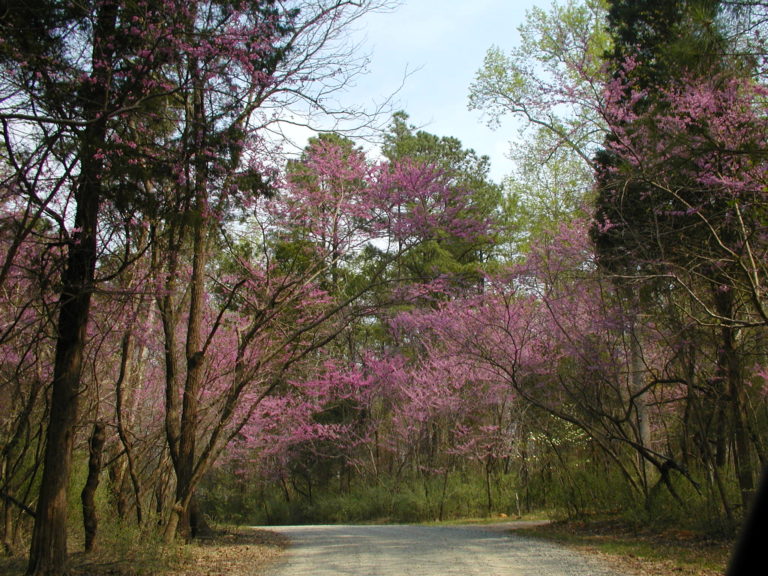Eastern Redbud is a lovely, small, (15-20 feet tall x 15-20 feet across) understory tree occurring along streams and wet bottoms as well as on dry slopes and ridges in the Piedmont and some of the mountain counties of the Carolinas. Eastern Redbud is deciduous, very hardy (tough as nails) and highly ornamental. It is especially noted for its striking, rosy, pea-like flowers emerging in clusters on bare, grayish branches – and even on the trunks – before the foliage emerges in spring. And the flowers are edible! They develop later into pendulous, leguminous pods about 4-5 inches long which persist into winter. Leaves are alternate, simple, heart-shaped and pleasing. Branches are gracefully arching. The cultivars of Redbud selected for unusual color seem always to disappoint compared with the subtle hues of the native trees in their breathtaking spring display.
NURSERY HOURS
Wednesday: 10-4 Thursday: 10-6 Friday-Saturday: 10-4 Sunday: 12-4
Cercis canadensis

Key Info
Scientific Name: Cercis canadensis L.
Common Names: Eastern Redbud
Family Names: Fabaceae (Legume or Pea Family)
Plant Type: Tree / Shrub
Leaf Retention: Deciduous
Flower Color: Pink/rose, Lavender
Special Characteristics: Tolerates drought, Fragrant flowers, Edible flowers, Attracts bees, Attracts butterflies, Attracts birds, Fixes atmospheric nitrogen
Additional Info
Habit: Upright with many wide arching branches, zig-zaging branches and taproot.
Height: 20'-30'
Spread: 25'-35'
Soil Conditions: Average to wet, but well drained; grows on a wide range of pH, acid to alkaline, loam or clay-based soils.
Leaves: Alternate, simple, cordate in shape, 3 to 5 inches long and wide, with an entire margin, thin and papery, with prominent veins.
Flowers (or reproductive structures: Pinkish purple, pea-like flowers bloom all along outer branches and trunks before leaf expansion; one of the first signs of spring.
Fruit: Flattened, dry legumes, brown, 2 to 4 inches long that contain flat, elliptical, brown seeds 1/4 inch long, maturing in late summer.
Natural Distribution: Wood edges, streambanks, roadsides, rocky slopes.
USDA Hardiness Zone: 4 to 8
USDA Wetland Indicator Status in NC: UPL
Pollination: Bees, butterflies, other insects
Wildlife Connections: Redbud attract large numbers of bumble bees and native bees, and also provides nesting material for native bees.
Propagation: By seeds (may need to be scarified).
